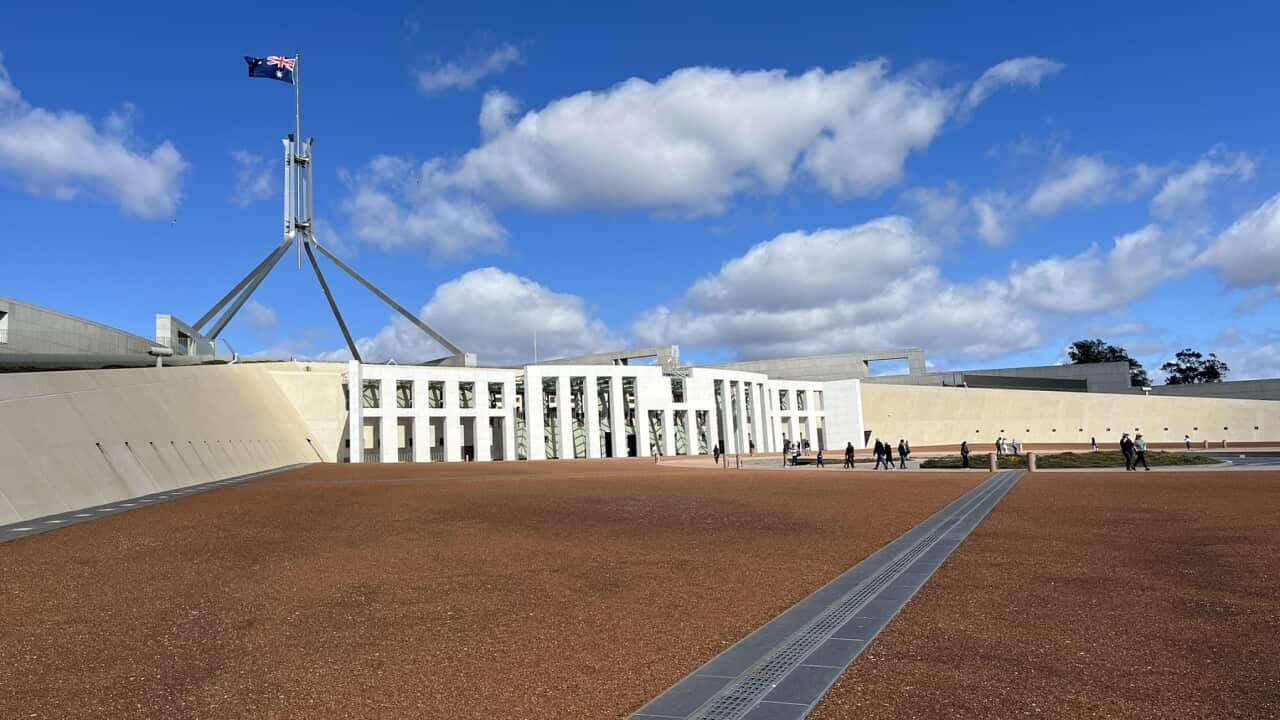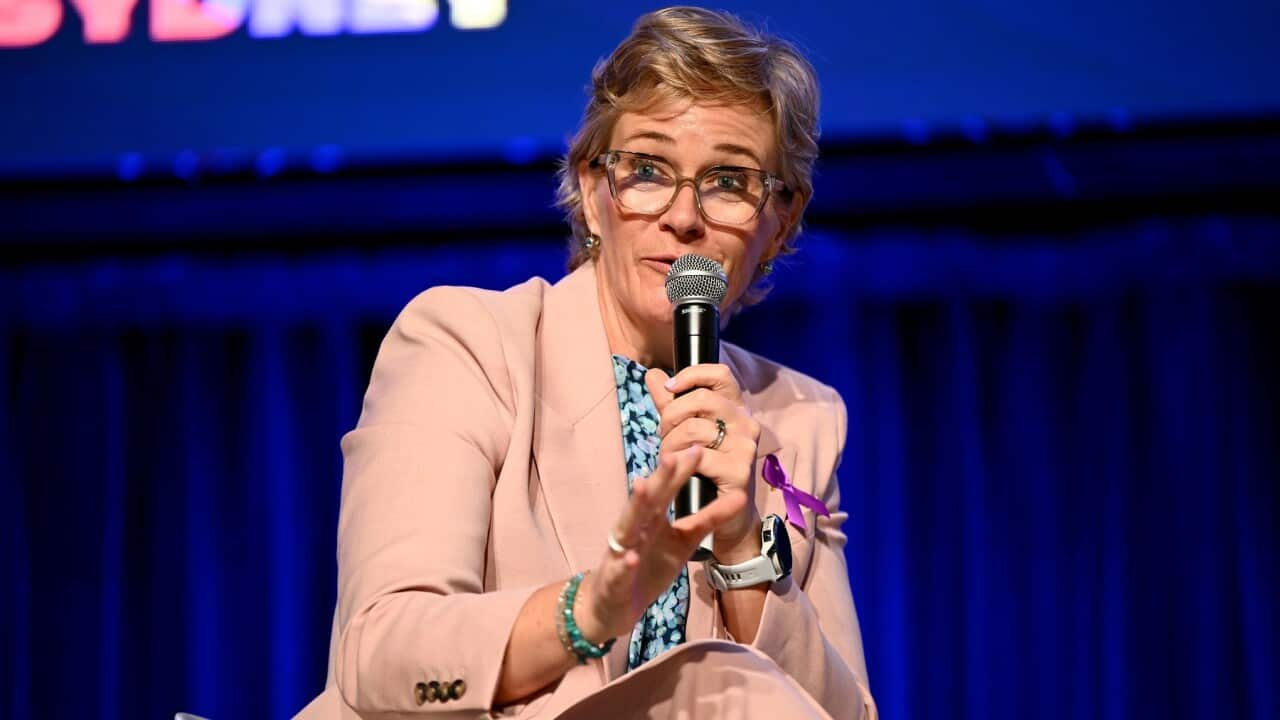TRANSCRIPT
The Australian Federal Election is fast approaching.
DUTTON: "Australians will have an opportunity."
ALBANESE: "A choice between Labor, committed to addressing cost-of-living pressures while building Australia's future..."
DUTTON: "...and a new, strong Coalition government to get our country back on track."
...but you may still have a few questions about Australian politics.
In this episode of Voting 101 we explain what the Australian Parliament is and who the major political players are.
Ok so, first of all, Australia's political system can be described as a constitutional monarchy, governed by a representative parliamentary democracy.
The monarchy part is due to Australia being a member of the British Commonwealth, meaning it doesn't have a president and - instead - the head of state of Australia is technically the United Kingdom's King Charles.
I know what you're thinking...
"God save the king. God save the king!"
...since when was Australia ruled by a king?
And you're right as Australia is an independent country, having achieved full sovereignty from the UK in 1986.
So now the King only plays a small, mostly symbolic role through his representative the Governor General and - in reality - Australia is ruled by three levels of government.
They are the federal Parliament, the state or territory Parliaments, and local municipal councils.
Each of these has different duties, but the most senior decision-making body in Australia is the federal Parliament in Canberra.
Every three years, a federal election is called and Australians can vote for the candidates to represent them at that top level.
Then the party or coalition of parties who wins a majority of seats, or support from a majority of members, in what's called the House of Representatives forms a government and appoints a Prime Minister.
But what exactly is the House of Representatives?
Well, the federal Parliament is made up of two chambers: the House of Representatives, or the lower house, and the Senate, otherwise known as the upper house.
"So the Prime Minister is drawn from the House of Representatives, the Lower House and the Senate is a house of review, if you like. And there are different processes in different houses, but they're both really important mechanisms for decision making in Australia."
That's Kath Gleeson, Deputy Commissioner at the Australian Electoral Commission, which is the independent body that runs Australia's federal elections.
So, in practice, in order for the federal government to pass a law, a bill must be introduced in the House of Representatives, passed through the Senate, and finally approved by the Governor General on behalf of the Crown.
In recent history, control over the federal government has shifted back and forth from the centre-left party, Labor, to the centre-right Liberal-National Coalition.
In the lead-up to the election, the current Prime Minister Anthony Albanese, who heads the Labor party, has been pitching his political record to voters.
"Keeping us out of recession, 1.1 million jobs, getting inflation from a six (per cent) to a two (per cent), making sure that people's living standards are looked after and are not left behind, completing the N-B-N, finishing Gonski."
Meanwhile, Opposition leader Peter Dutton - who heads the Coalition - has said he deserves a chance to govern.
"I'm confident that we can afford a majority government because millions of Australians cannot afford three more years of Labor."
Aside from the major parties though, the support for independent politicians and minor parties has risen steadily over the past 40 years according to the Australia Institute.
These minor parties include the left-wing Greens, led by Adam Bandt, which has four MPs and 11 Senators in federal Parliament...
"Change is possible and the first step is voting for someone who's fighting for you, not the billionaires."
As well as the right-wing One Nation party, led by Pauline Hanson, which has two Senators...
"Immigration policy must serve Australia's best interests by prioritising immigrants from countries with similar cultures and values and denying immigration to people from countries which don't."
They sit on what's called the crossbench in between both parties in the House and the Senate and play an important role in the drafting and debating of legislation.
At this election Australians will be electing all 150 members of the House of Representatives as well as 40 out of 76 members of the Senate.
Members of the House of Representatives, otherwise known as M-Ps, have three-year terms in office and represent local communities all over Australia.
"An electorate is a geographical area and is represented by one member of Parliament. Now, all those areas, geographical areas, are different sizes, because each electorate has roughly the same number of electors inside it, so one member of parliament represents one electorate."
And with the Senate it's a little different.
Every state has 12 senators regardless of the size of the population and, as for the Northern Territory and the ACT, they each have two senators.
Senators typically have six-year terms but they are staggered so that roughly half of the Senate is up for election each voting cycle.
Ok, so those are the basics of Australia's political system.
If you haven't already, start making plans for how you'll cast your vote in the upcoming election and if you have any more questions about voting you can head to aec.gov.au to find out more.
Have a listen to our other episodes of Voting 101 to find out if you're eligible to vote and listen to a step-by-step breakdown of how to cast your ballots.
But until then... happy voting!













